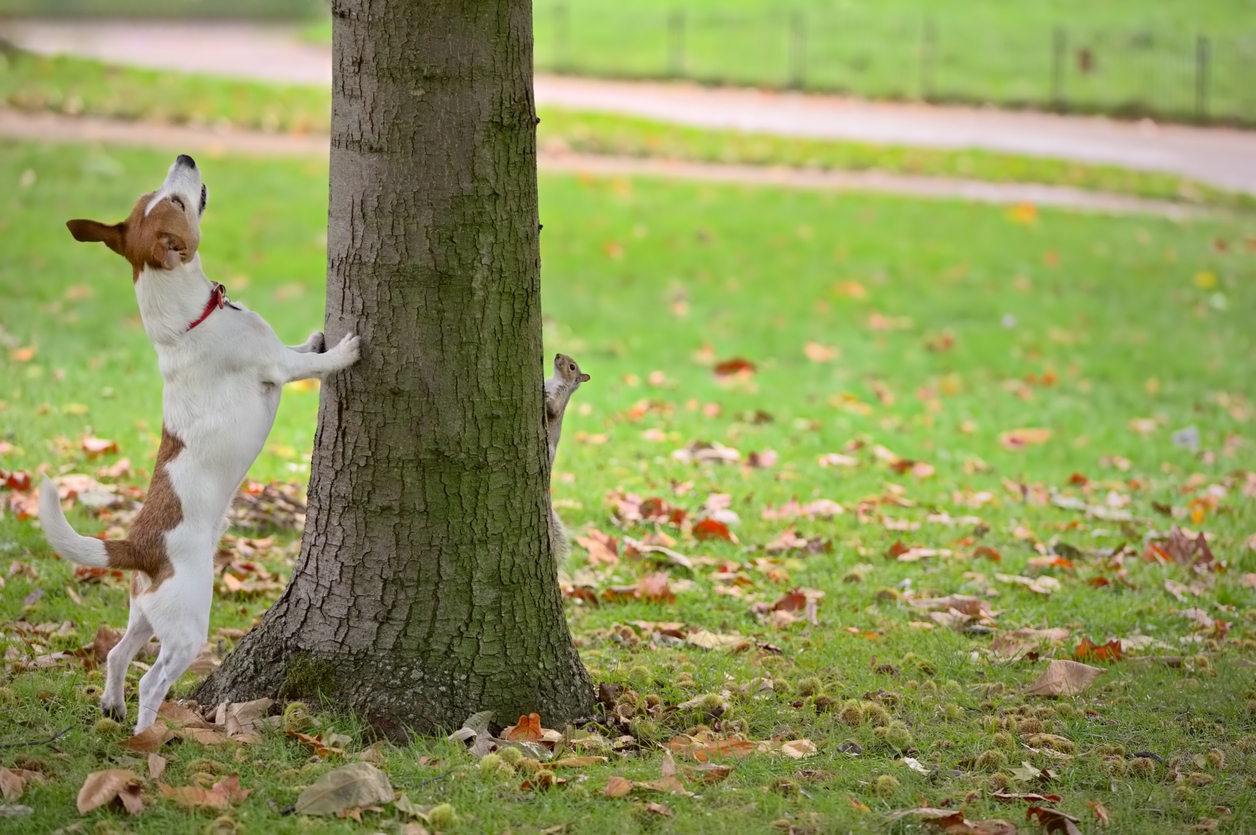How to Train Your Dog to Bay Squirrels
Squirrels can be hunted without the aid of dogs, but a canine pursuit can increase opportunities to make a harvest. A properly trained dog can be a priceless asset to a hunter who is serious about bagging squirrels.
There is some truth to the adage, "You can't teach an old dog new tricks." Although a squirrel dog can be trained at any age, you will get the best results if you start this process when he dog is 8 to 10 weeks old. Beginning the training routine at a young age should produce the desired results quickly.
How to Start
You will need several freshly harvested squirrel tails in order to begin the training process. While you will only use one tail at a time, they will quickly become worn and need to be replaced. Be sure to have a plenteous supply available.
Treat the tail as though it's a chew toy and encourage the puppy to tug on it and play with it. This will cause the dog to associate the scent and taste of the squirrel with a sense of excitement.
Once the puppy has developed a love for playing with his new toy, tie a string to the squirrel tail and pull it across your yard, allowing the puppy to chase after it. This aspect of training teaches the dog to pursue the squirrel. Occasionally dragging the tail up the trunk of a tree will show the puppy that the treat he is chasing may leave the ground.
Spend a couple of weeks on these first two steps of the training process. Once you are comfortable with the progress your dog has made from the indoor to the outdoor training, you can transition to a more difficult stage in the process.
Take your dog outside and show him the squirrel tail. Encourage him to get excited about the activity he's about to participate in. Once his adrenaline is pumping, have a friend hold him in an area that is out of sight.
Then, quickly drag the tail across your yard and up a tree trunk. Tie the tail to a limb and tell your helper to release the dog. Cheer him on as he tracks the scent until he finds the tail. When he locates his prize, let him play with it briefly before repeating the routine.
Have the dog run through this drill several times over the course of a few days. When you are satisfied with this part of his training, it will be time to move him to the woods.
Training in the Field
Trailing the scent of a squirrel while in the confines of your back yard is one thing, but picking up the trail in a forested area is quite another. When dragging the tail through the woods, begin by only pull it a short distance.
This will help your dog to quickly track down the squirrel tail and learn to separate out the smells of other wildlife. After a few rounds of this short-distance tracking, he will be ready for the challenge of a long-distance drill. As he is seeking out the squirrel tail, he might end up baying a live squirrel for you.
Be prepared to make a harvest! Allowing him to mouth a freshly-killed squirrel will round out his training. He will no longer be a rookie pup, but instead will be a full-fledged squirrel dog.
A well-trained squirrel dog is a dependable hunting companion. He will be able to seek out and pinpoint squirrels for you. The process of training, from the initial indoor exercises to the time he bays his first live squirrel, is a process that requires some effort. But, taking the time to train him properly will result in a dog that enjoys the hunt.



